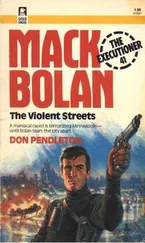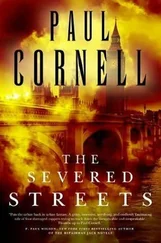And yet he moved on, seemingly oblivious of the hostility until, at the corner of Edmondson and Brice, he watched a young kid, fourteen or fifteen years old, pass a paper bag to an older boy who ran around the block. For Edgerton, it was opportunity knocking. With the rest of the street watching coldly, he grabbed the kid by a shoulder and dragged him to a Cavalier around the corner, pressing the boy for details about the murder.
A Western uniform, watching from the crime scene two blocks away, later cautioned the detective.
“You shouldn’t have gone down there alone,” he told Edgerton. “What if some shit had started?”
To which Edgerton could only shake his head.
“I’m serious, man,” the uniform said. “You only got six bullets.”
“I don’t even have that.” Edgerton laughed. “I forgot my gun.”
“YOU WHAT?”
“Yeah. I left my gun in my desk.”
A cop at Edmondson and Brice with no gun. The Western uniforms were stunned; Edgerton was indifferent: “This job,” he told them, “is ninety percent attitude.”
Now, working the Andrea Perry murder, Edgerton is back in another West Baltimore neighborhood, mixing with the locals as few police can. He talks to the occupants of every rowhouse that backs up to his alley, he chats up the hangers-on at the carryouts and bars. Working from the bus stop toward his victim’s home on Fayette Street, he checks every address for a witness who may have seen the child walking with someone. When nothing comes from that effort, he begins checking other sexual assault reports from the Southern and Western districts.
In fact, Edgerton makes a point early on in the investigation of calling the operations unit officers from the Southern, Southwestern and Western districts downtown and briefing them on the case. He tells them to be looking for anyone involved in anything sexual with underage girls, or any report involving an abduction or a.32-caliber weapon. Edgerton urges the ops unit officers in all three districts to call him with information that seems even remotely related. That, too, differs from the approach taken in the Latonya Wallace case, where district officers had been detailed downtown to help with the investigation. For this little girl, Edgerton decides, the districts will not come to CID; CID will go into the districts.
Only once, on the day after the body’s discovery, is there any hint of the communal effort that normally accompanies a red-ball case, and it is prompted by Nolan, who for the sake of appearances asks McAllister, Kincaid and Bowman to give them a day’s help to expand the canvass.
Looking through the case file that day, the other detectives in the squad wonder aloud why Edgerton hadn’t immediately followed up on the anonymous call. At the very least, they argue, he should go out and grab the woman whom the male caller allegedly saw running from the alley.
“That’s the last thing I want to do,” says Edgerton, explaining his strategy to Nolan. “If I get her down here, what am I going to do? I have one question to ask her, and after that I’ve got nothing.”
To Edgerton’s way of thinking, it is another mistake that too many detectives make too often-the same mistake that they had made with the Fish Man in the Latonya Wallace case. You bring someone down and go at them in the interrogation room with no real ammunition. They walk out an hour later, more confident than before, and if you ever do get any leverage on them, you’ve only made it harder to come back and break them the second time.
“I ask her why she was running out of the alley, and she tells me she doesn’t know what I’m talking about,” Edgerton explains to Nolan. “And she’s right. I don’t know what I’m talking about.”
He still doesn’t believe that the woman named by the caller actually ran from the alley after the murder. But even if he did believe it, he would not risk an interrogation until it had at least a chance of success.
“If all else fails, then I bring her down here and ask my one question,” the detective says, “and not before.”
Nolan agrees. “It’s your case,” he tells Edgerton. “Do it your way.”
Beyond his squad’s limited help with the expanded canvass, Edgerton’s isolation on the case is complete. Even D’Addario keeps his distance: He asks Nolan for regular progress reports and offers help if help is needed, but otherwise he is content to let Edgerton and his sergeant set their own pace.
The contrast with D’Addario’s response to the Latonya Wallace investigation is striking. Edgerton hopes that the lieutenant’s hands-off approach is, at least in part, a display of confidence in his investigator. More likely, the detective reasons, D’Addario has himself soured on the full-blown red-ball treatment. Throwing troops and money at a case had accomplished so little in Reservoir Hill that maybe the lieutenant is reluctant to travel the same road a second time. Or maybe, like everyone else on the shift, LTD is just too damn tired for another all-out campaign.
But Edgerton also knows that nothing happens in a vacuum. He is being left alone to work his case largely because D’Addario can afford to leave him alone. On the day that Andrea Perry was discovered, the clearance rate stood at a fat 74 percent, with five outstanding murder warrants still on the street-a rate that compares favorably to both the previous year’s totals and the national average. As a result, D’Addario can once again make decisions without worrying about public consumption or the perceptions of the command staff. From talking with Pellegrini, Edgerton knows that the lieutenant has already expressed some dissatisfaction with the tidal wave of investigation that followed Latonya Wallace’s death. At various stages in that probe, D’Addario had listened to Landsman and Pellegrini both argue that less could be more, and the lieutenant seemed to agree. If the clearance rate had been higher, if the department hadn’t also been publicly sweating the murders of all those women in the Northwest, then the case might have gone differently. Now, with the board showing more black than red, the homicide unit’s political equilibrium has been fully restored. Thanks to some hard work, some skillful maneuvering and not a little luck, D’Addario’s reign has survived the threat and been returned to its rightful glory. And if the rise in the clearance rate and D’Addario’s true feelings about the red-ball treatment aren’t reasons enough for Edgerton to be granted his distance, then Edgerton also understands that he is alone on this case simply because the murder has fallen to Nolan’s squad.
Not only does Nolan have absolute confidence in Edgerton’s methods, but he is the sergeant least likely to ask for help from the rest of the shift and from D’Addario in particular. Of the three sergeants, only McLarney and Landsman are now counted among LTD’s true disciples; Nolan had stayed on the fence during D’Addario’s year-long conflict with the captain. Lately, the lieutenant has taken some pleasure in bringing that out.
Two nights ago, all three squad sergeants were in the coffee room as D’Addario prepared to leave at the end of a four-to-twelve shift.
“I note by my watch that it’s nigh on twelve o’clock,” he declared dramatically. “And I know that before the cock crows thrice, one of you shall betray me…”
The sergeants laughed nervously.
“… but it’s okay, Roger, I understand. You gotta do what you gotta do.”
As Nolan’s man, Edgerton couldn’t really be sure exactly why he was being isolated on the Andrea Perry case. It may well be Dee’s faith in him, or it may be the lieutenant’s new philosophy about leaving red balls to the primary investigator. Then again, it may just be that Roger Nolan is the one sergeant who is not about to ask his lieutenant for anything. Maybe, Edgerton thinks, it’s a little of all three. For an outsider like himself, it’s always harder to get a handle on the office politics.
Читать дальше












